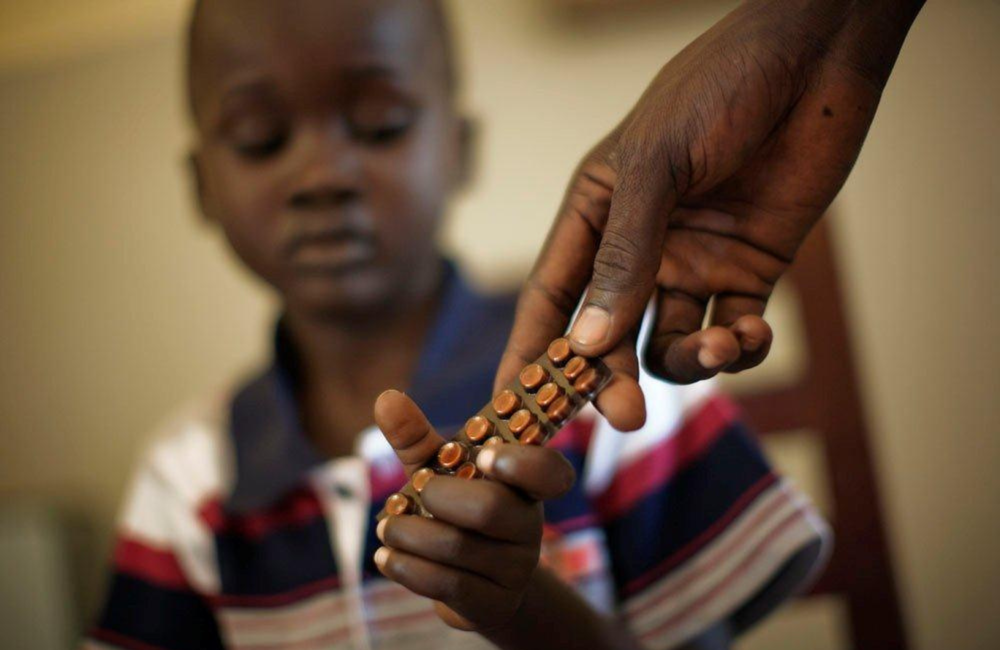
A combination of an integrase inhibitor and boosted darunavir is just as effective as a three-drug regimen in maintaining viral suppression in children and adolescents, investigators from the SMILE study report in eClinical Medicine.
The study investigators say that NRTI-sparing regimens are worth studying in children because in circumstances where the use of a fixed-dose, multi-drug single pill is not possible, they may reduce pill burden and eliminate the need for twice-daily dosing.
Long-term treatment with the NRTI tenofovir disoproxil fumarate, the older form of tenofovir, has been associated with reduced bone mass in children and adolescents with HIV. Another NRTI, zidovudine is poorly tolerated.
The SMILE study was designed to investigate whether an NRTI-sparing two-drug regimen was as effective as a regimen containing two nucleoside reverse transcriptase inhibitors (NRTIs) and either a non-nucleoside reverse transcriptase inhibitor (NNRTI) or a protease inhibitor in virologically suppressed children and adolescents.
Since the SMILE study was launched in 2016, the ODYSSEY study has reported that a combination of two NRTIs and the integrase inhibitor dolutegravir is superior to two NRTIs plus efavirenz or a protease inhibitor as either first- or second-line treatment in children and adolescents.
The World Health Organization (2019) has recommended that children and adolescents should receive dolutegravir and two NRTIs as first-line treatment.
A two-drug regimen of dolutegravir and boosted darunavir was shown to be equivalent to a three-drug regimen of boosted darunavir and two NRTIs in virologically suppressed adults in the DUALIS study.
The SMILE study recruited 318 children and adolescents aged 6 to 18 years who were virologically suppressed on a regimen containing two NRTIs and either an NNRTI or a protease inhibitor for at least 24 weeks. Just over half (53%) were enrolled in Africa, 24% in Europe, 15% in Thailand and 8% in Latin America. The study population was 61% female, just over half were Black African (55%), the median age was 14 years and the median CD4 count was 782.
Participants were randomised to stay on their existing regimen or switch to an integrase inhibitor plus darunavir boosted with ritonavir. At the study start, elvitegravir was used as the integrase inhibitor but after it was discontinued as a single agent, it was replaced by dolutegravir and recruitment was restricted to children aged 12 years and over.
At randomisation, 31% of participants in the standard of care arm were taking an NRTI backbone of abacavir/lamivudine, 35% were taking zidovudine/lamivudine, 17% tenofovir/emtricitabine and 13% tenofovir/lamivudine. Sixty percent were taking a NNRTI, most commonly efavirenz (70%) and 39% a protease inhibitor (predominantly lopinavir/ritonavir).
The primary outcome of the study was virological rebound above 50 copies/ml during the 48-week follow-up period. There was no significant difference in virological rebound; 5% of participants in the integrase inhibitor arm and 7.6% in the standard of care arm experienced rebound (20 participants in total). Samples from 11 participants were successfully sequenced for genotypic resistant testing. There was no significant difference in the prevalence of major resistance mutations between study arms.
Participants in the integrase inhibitor arm had significantly lower CD4 counts at week 48 and experienced a mean 48 cell loss in CD4 count by week 48. This difference had no significance in terms of clinical events. There was no difference in the proportion of participants with CD4 counts below 500 between the study arms at week 48.
There was no significant difference in serious adverse events between study arms. Participants in the integrase inhibitor arm experienced greater increases in LDL cholesterol and reductions in HDL cholesterol by week 48, although the magnitude of change was modest.
Participants in the integrase inhibitor arm gained almost 2kg more weight than participants in the standard of care arm during the study. The study investigators say that switching from weight-suppressive drugs may have contributed to the difference in weight gain.
Approximately two-thirds of participants assigned to the integrase inhibitor arm (64%) reported that the two-drug combination made things a lot easier for them than their pre-study medication and 81% wanted to stay on the combination.
The study investigators say that the study results support the use of dolutegravir and boosted darunavir to simplify treatment in virological suppressed children and adolescents.
Campagnucci A et al. Nucleoside/nucleotide reverse transcriptase inhibitor sparing regimen with once daily integrase inhibitor plus boosted darunavir is non-inferior to standard of care in virologically-suppressed children and adolescents living with HIV – Week 48 results of the randomised SMILE Penta-17-ANRS 152 clinical trial. eClinical Medicine, 60: 10205, 2023 (open access).
DOI: https://doi.org/10.1016/j.eclinm.2023.102025
Full image credit: 'South Sudan: Anniversary of the World's Newest Country'. Child receiving tuberculosis medicine in South Sudan with support from the Global Fund to Fight AIDS, Tuberculosis and Malaria and UNDP. UNDP South Sudan/Brian Sokol. Available at www.flickr.com/photos/unitednationsdevelopmentprogramme/7479902506 under a Creative Commons licence CC BY-NC-ND 2.0.
